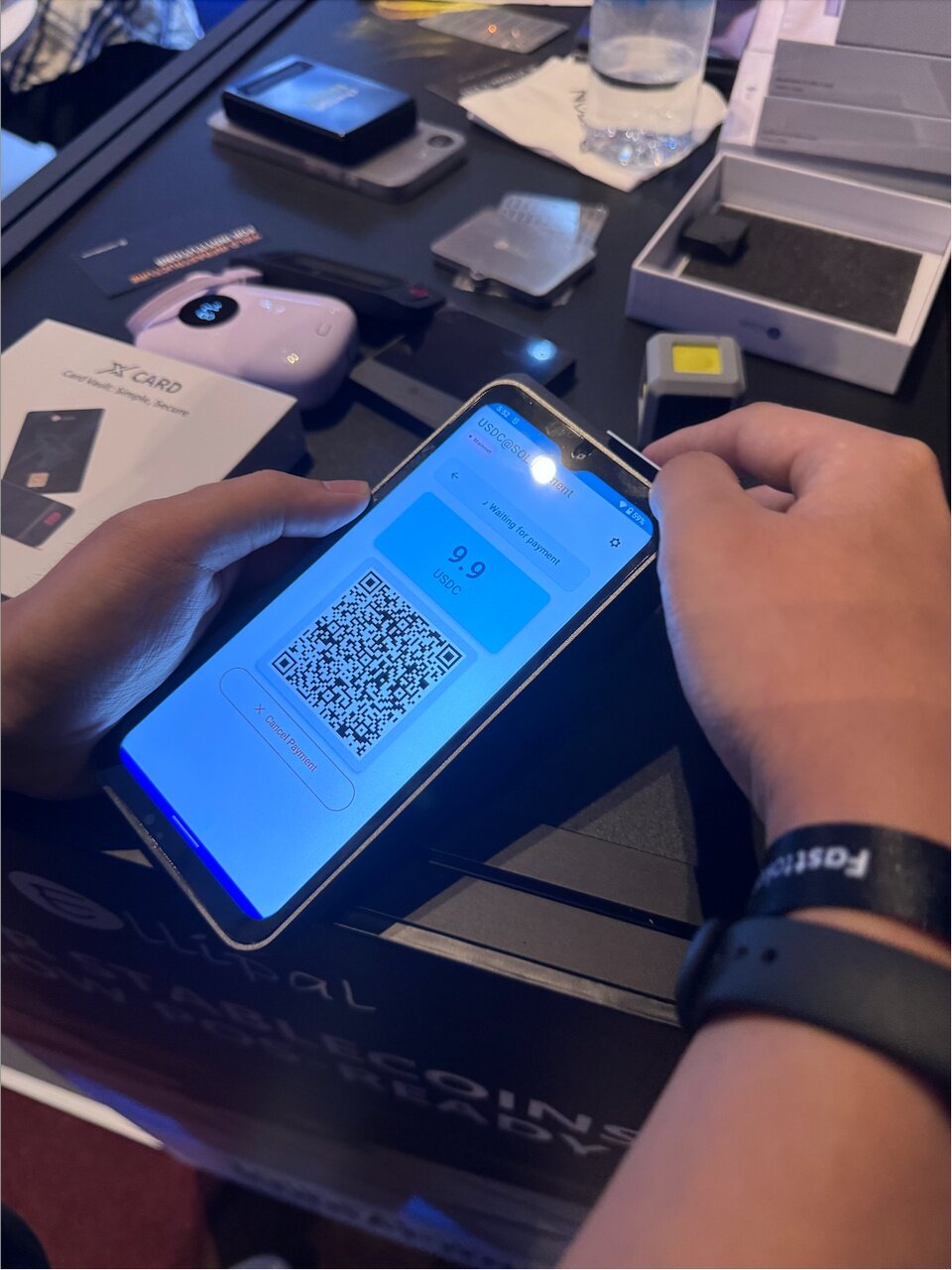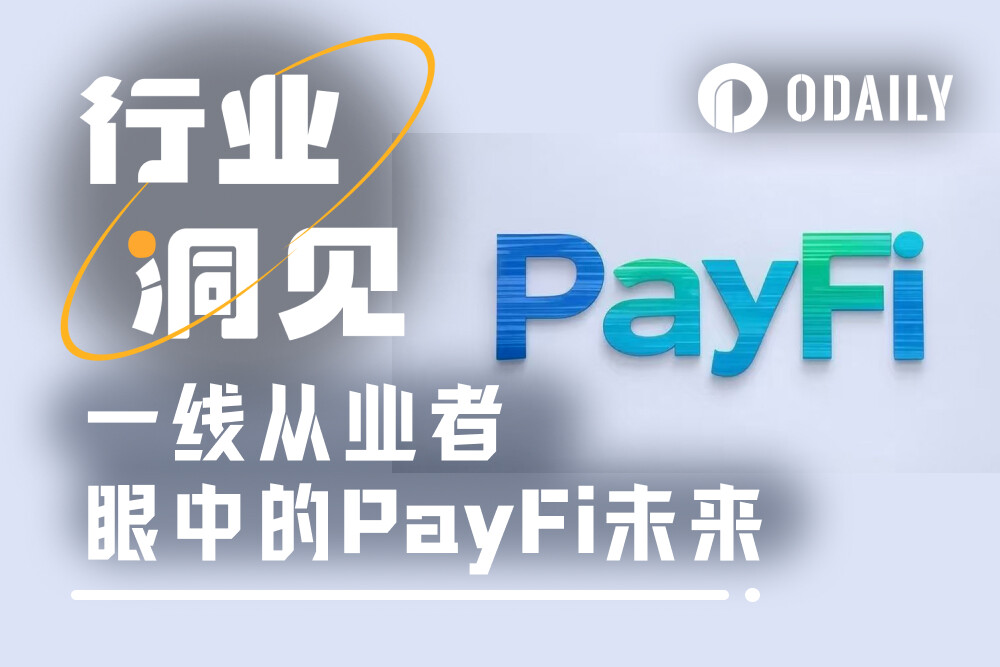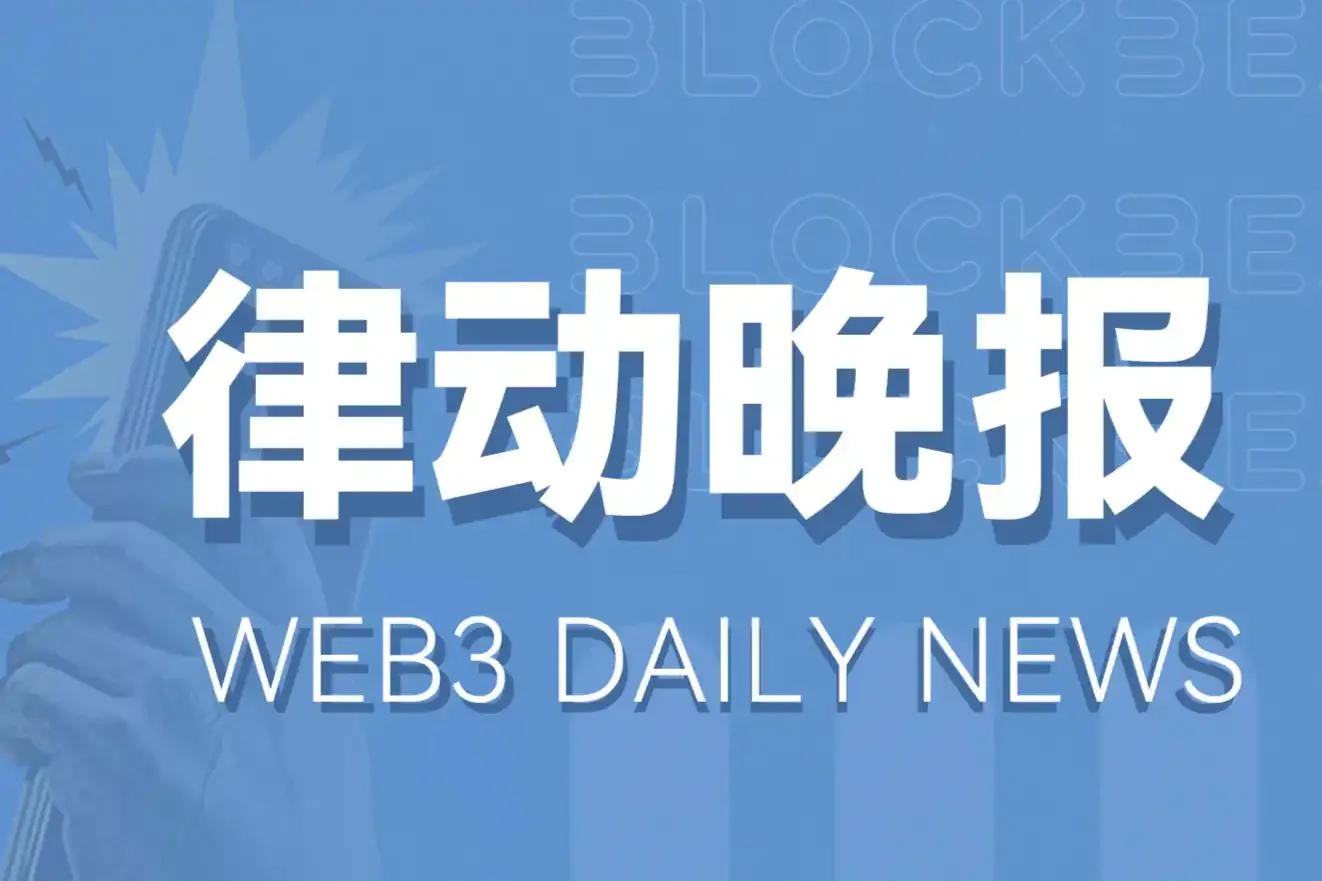Original|Odaily Planet Daily (@OdailyChina)
In 2025, stablecoins have become a prominent source of cash flow in the cryptocurrency industry, and the closely related PayFi sector has also attracted active participation from various forces: whether it be crypto-native projects, payment industry giants, stablecoin issuers, cryptocurrency exchanges, or stablecoin public chains, all are actively laying out their strategies in their own ways, striving to seize the initiative in the development of the PayFi sector.
Against this backdrop, Odaily Planet Daily interviewed several practitioners at the forefront of the PayFi industry during the Token2049 event in Singapore in early October. Through these discussions, we found that the future development of PayFi is still full of possibilities. The following content is organized based on the interviews, with some information adjusted to fit the narrative logic and length.
The Paradox of the PayFi Industry: Is the U Card a Necessary Path for Mass Adoption?
When it comes to PayFi, many people's first impression may still be the U Card. Previously, Infini had to suspend its U Card business due to the lack of market traction, which sparked heated discussions in the market (Recommended Reading).
At the Token2049 event, when asked whether they were optimistic about the U Card business model, several practitioners gave different answers.
Roger, a marketer from DeCard, told Odaily Planet Daily that based on the local payment license in Singapore, DeCard's issuance volume and user numbers have both seen varying degrees of growth. The compliance advantages accumulated over the long term also allow DeCard to build its application channels and user networks without starting from scratch, enabling it to leverage the user network systems of traditional payment giants like Visa and Mastercard, as well as traditional banking. In his words, the U Card is still regarded as an important segment of their business.
But there were also opposing views.
Pearce Chen from BenPay told Odaily Planet Daily: “Instead of relying on traditional U Card businesses from payment institutions like Visa/Mastercard, we have more forward-looking solutions that use ‘QR codes + POS machines or APP scanning’ to meet payment needs. This allows for direct stablecoin payments, which are then settled into local clearing networks and converted into fiat currency. This effectively sidelines upstream card-issuing institutions like Visa and Mastercard, allowing us to build our own payment application channels and user networks. If we want to use stablecoins for payment, why should we still rely on the traditional payment institutions we aim to disrupt?”
From this perspective, BenPay's approach is more Crypto Native. Unlike DeCard's "integration approach," BenPay has chosen the more challenging path of "building a PayFi network from scratch." Additionally, Pearce Chen mentioned that another focus of BenPay is the development of tools for DeFi protocols, simplifying complex DeFi protocols for traditional users to easily enjoy DeFi yields through their Benfen payment public chain and self-custody wallet.
Coincidentally, one of Ellipay's major business focuses is also to enter the payment space through POS hardware. LX, the product director of Ellipay, explained that their POS machines currently support users for offline consumption scenarios; with just a swipe, users can complete stablecoin transfers like USDT/USDC in a matter of seconds.

Ellipay POS payment demonstration on-site
Faced with the layers of barriers set by traditional card-issuing institutions, PayFi projects in the cryptocurrency industry choose to bypass restrictions through changes at the hardware entry level, achieving slow penetration of PayFi applications in everyday and consumption scenarios. Especially in overseas markets where card payments are common, POS consumption remains one of the usual payment methods for many.
After all, overseas markets do not have a one-stop payment app like WeChat Pay or Alipay that can facilitate payment operations through QR codes.
Moreover, LX also mentioned: “PayFi is undoubtedly a valuable business and also a profitable one. Although profit distribution will indeed concentrate towards upstream (such as stablecoin issuers), we see more opportunities downstream compared to other sectors. This is because the crypto payments represented by PayFi are a super sector with extremely diverse user scenarios, different from all previous crypto sectors; its user scenarios and needs are diversified. We cannot view it through the lens of traditional payments because, in the PayFi sector, the value distribution model of payments will undergo fundamental changes: the value at the application layer will no longer be limited to payment pipeline fees but will stem from the additional services created for high-freedom users (such as integrated DeFi yields, social finance functions, programmable currency applications, etc.), which will constitute the core growth pole of future downstream profits.”
It must be said that, based on the current limited project development models, the business model of PayFi still possesses strong scalability and more possibilities.
Challenges and Opportunities in the PayFi Industry: Regulatory Arbitrage, User Education, and Underlying Infrastructure
Aside from existing businesses, Odaily Planet Daily also discussed the biggest challenges currently facing the PayFi industry with practitioners.
Pearce Chen, the business VP of BenPay, systematically shared his views. He believes that the PayFi industry currently faces three major challenges:
First, the biggest challenge is regulatory compliance issues. Although different PayFi projects can set KYC/KYB thresholds at the payment transaction level, there are no clear regulations or management requirements regarding the interest earned on users' stablecoin assets at the financial management level in various countries. Essentially, the interest earned by PayFi projects falls under regulatory arbitrage, and the regulatory requirements for financial management vary across different regions and national laws.
Second, there is a low adoption rate among C-end users. Currently, only the crypto community and some cross-border trade businesses use stablecoins for transactions; 95% of the population is even unaware of stablecoins, and many only know about Bitcoin at a hearsay level. From this perspective, the lack of user education is one of the main obstacles to the popularization of the PayFi industry, which often requires corresponding products to be sufficiently grounded and have a certain level of penetration among the population. It may even require a popularizing opportunity similar to WeChat red envelopes.
Finally, over-reliance on existing payment systems and the inadequacy of underlying infrastructure is also a significant challenge facing PayFi. Currently, the operation of PayFi products still heavily relies on the Swift settlement system, traditional banking systems, and USD funding positions; any industry-level innovation requires interfacing with various VA accounts and underlying systems. Furthermore, banks, as the gatekeepers of the PayFi industry, hold the "power of life and death"—account bans can be decided unilaterally, leaving PayFi projects with no means of counteraction. Countless PayFi projects work hard to create various "decorative innovations," essentially to prove "I am doing business, not money laundering," yet still face structural oppression from regulatory agencies and the banking system.
When discussing the "business model of PayFi projects," Pearce Chen also emphasized that the true competitive barrier in the PayFi industry often comes from the improvement of large infrastructures and underlying protocols— payments themselves may not be profitable, and project parties must achieve profitability by accumulating assets and connecting the financial management ecosystem. Just like Alipay would struggle to succeed without Yu'ebao; one cannot simply integrate many bank underlying systems or major blockchain networks and think everything is fine; such businesses would be very burdensome. In contrast, BenPay has chosen to start anew, building its own blockchain network, where users can recharge stablecoins from various blockchain networks that automatically map to corresponding smart contracts, converting to BUSD and supporting consumption and financial management. This greatly simplifies the user operation process and usage threshold, which is crucial for subsequent product promotion and market penetration.
“The ultimate logic of the payment sector is that whoever can build a cheap and high-performance public chain, and whose user experience is better, will have users voting with their feet.”
Currently, Ethereum and Solana occupy certain advantages with their security and low cost. However, in the near future, any high-performance public chain has the potential to drive the large-scale popularization of PayFi—it doesn't even have to be highly decentralized; it just needs to reduce costs and increase efficiency to meet the needs of both B2B and B2C users.
These views were also echoed by LX, the product director of Ellipay. Regarding the challenges in the PayFi sector, he stated: “Similar to many crypto sectors, the popularization of PayFi faces three core challenges: First, the security of funds is fundamental. The security of user assets is a prerequisite for all business models, which directly depends on the iteration of underlying technology and the improvement of product design. Second, there are global structural contradictions in regulatory compliance. PayFi inherently possesses global attributes, but its ideal of unified service conflicts with the current regulatory landscape; the solution lies in seeking global regulatory cooperation. Finally, user awareness and penetration rates are fundamental bottlenecks. After more than a decade of development, the user penetration rate of cryptocurrencies is still only 5%-10%, and very few users possess the complex financial knowledge required for PayFi. Breaking through this bottleneck may rely on the emergence of a “super application” that fundamentally lowers the usage threshold through an exceptional experience.”
Finding a balance between asset security, global regulation, and user awareness is a crucial question that all PayFi projects must address in their quest for global popularization.
The Short-term and Long-term Wars in the PayFi Industry: Phase Choices Between B-end and C-end Businesses
Additionally, for projects in the PayFi industry, the focus of their business is also an unavoidable choice of trade-offs.
Given the current state of the industry, although C-end user demand is more active, B-end business still remains the focus for most PayFi projects due to factors such as market development stages. After all, compared to institutional clients with transaction volumes often reaching tens of millions or even hundreds of millions, the demand from C-end users is more fragmented and can be seen as "thankless" to some extent.
However, based on the information exchanged between Odaily Planet Daily and several practitioners, although PayFi business was initially viewed by industry insiders as a cash flow business more important for B-end users, in the long run, C-end user demand remains the mainstream and development focus of the market. Generally speaking, the development process of PayFi projects can be divided into the following three stages:
Early Stage: Focused on B-end Business. In this stage, PayFi projects need to ensure that their business can generate cash flow and secure a place in the market competition. Currently, truly profitable companies are primarily focused on the ToB sector, such as Huma Finance, a leading PayFi project in the Solana ecosystem; C-end business tends to focus more on traffic marketing and brand building.
Mid Stage: Balancing B-end and C-end. As PayFi projects develop to a certain stage, they need to ensure a smooth transition from "surviving" to "thriving," which requires the project parties to achieve "walking on two legs"—B-end business creates a continuous cash flow to support operations, while C-end business continuously expands the user market, increases user scale, and ensures future development.
Late Stage: Focused on C-end Business. In the long term, the ultimate goal of all PayFi projects remains to become unicorn companies or even monopolistic giants similar to mobile payment leaders like WeChat, Alipay, and PayPal. The business focus supporting this goal undoubtedly relies on the large-scale, high-frequency transaction payment demands of the C-end market.
From "surviving" to "thriving," and finally to "lasting," becoming the ultimate winner in the industry, PayFi projects have a long way to go, and both the B-end institutional market and the C-end retail market are indispensable.
The Future of PayFi Lies in Repeated Transfer Demands
At the end of the article, I would like to discuss the current industry dilemmas.
On one hand, there are more and more types of stablecoins in the cryptocurrency market, but for most people, the costs and scenarios for stablecoin transfers, payments, and transactions have not seen significant improvement; on the other hand, there are still billions of people in the world who do not have their own bank accounts or face immense survival pressure due to rapid depreciation of local fiat currencies and inflation.
In my personal view, the future of the PayFi industry cannot merely remain in the fluctuating and jumping numbers within cryptocurrency exchanges; it must step out of the cryptocurrency market and reach households around the world, penetrating into the subtle life scenarios of various daily needs embedded in the global economic system. It is through these repeated transfer demands that the PayFi industry can find its most loyal supporters, allowing an efficient and convenient user experience to conquer the billions of ordinary people living on Earth.
By then, PayFi will not be the dream of an individual or a single project, but an indispensable part of the reality of countless people's lives.
免责声明:本文章仅代表作者个人观点,不代表本平台的立场和观点。本文章仅供信息分享,不构成对任何人的任何投资建议。用户与作者之间的任何争议,与本平台无关。如网页中刊载的文章或图片涉及侵权,请提供相关的权利证明和身份证明发送邮件到support@aicoin.com,本平台相关工作人员将会进行核查。



